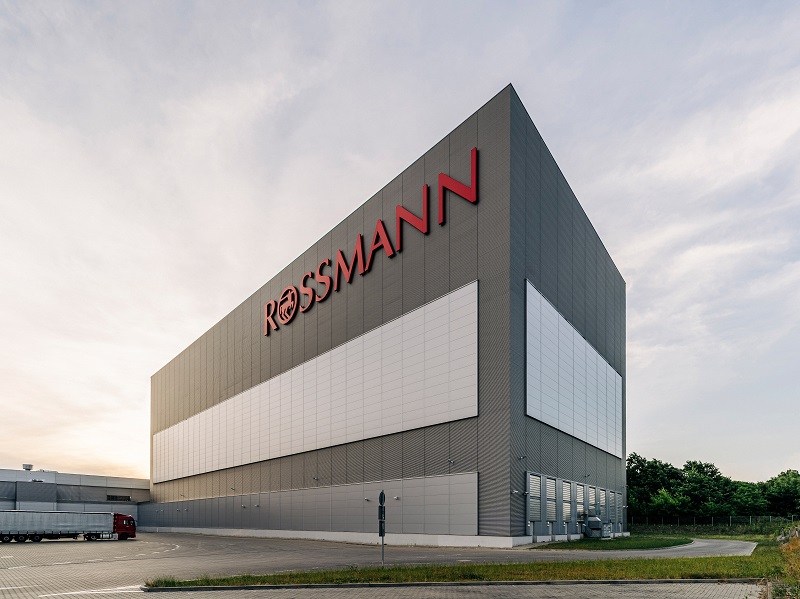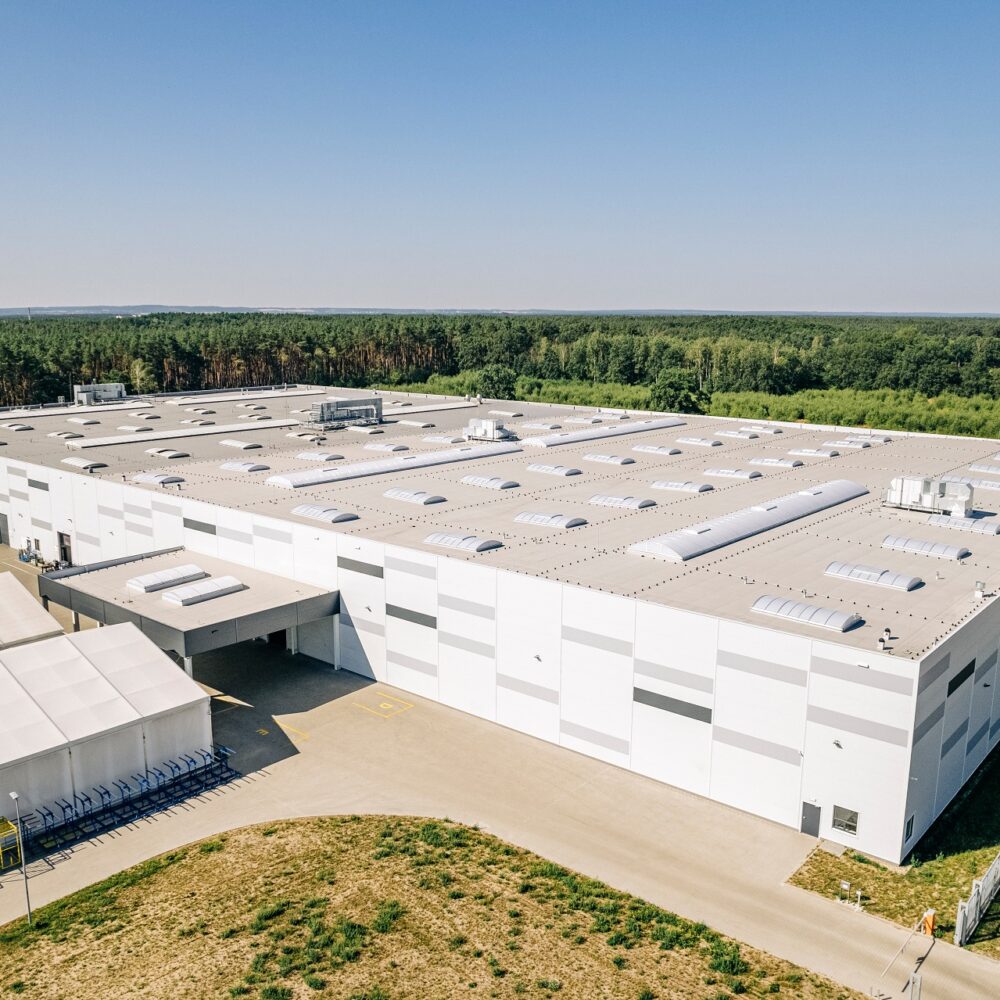
Purchasing a plot of land to build a warehouse hall is a major challenge and a huge responsibility. The decision must therefore be taken with care and preceded by a thorough analysis of legal, technical and location issues. Its purpose is to confirm that a building with the planned structure and use can be erected on the selected site and that its location will be conducive to the subsequent operation of the business. So what should the process of purchasing plots of land for warehouses look like?
How to choose an investment plot for a warehouse hall?
Building a warehouse hall is a complex investment process. It is divided into several stages, which usually start with a site search. And this one has to correspond to our future plans in terms of both the size of the building, its construction, but also its purpose – investors planning to build warehouses will therefore have slightly different priorities than those intending to set up a production facility. In principle, however, the process of purchasing a site in both cases is similar – we usually start by identifying, if only approximately, the location and look for vacant plots of land in these areas for the construction of the hall. We can ask for help from specialist estate agents, developers or look for the land on our own.
Plots of land for hall construction – legal status of the property
For the sake of the implementation of the planned project, the plot of land chosen by the investor should have a clear legal situation. At the outset, it is therefore worth looking at the land register, the primary source of information on the legal status of a property. What should you look out for? First and foremost, who is the owner or user of the land we are interested in (Section II) – because this is where we may encounter various surprises. It is also imperative to check whether there is a mortgage on the property in question (Section IV) and whether the land you have chosen is not, for example, subject to pre-emptive rights or encumbered by other third-party rights (e.g. an easement). Any such mention in the Land Registry can make it significantly more difficult to purchase land for warehouses.
Local development plan – basic condition for a project
If you have been able to establish that the site we have chosen has a clear legal situation, you have the way open for further analysis. In the next step, check whether a local development plan has been created for it. This is a document, available at the municipality or town hall with the assigned municipality or township geoportal, which is publicly available on the Internet. A local development plan (LDP) is a document in the form of a resolution that defines the land use of a given municipality-city, indicating the land use for individual plots of land. It consists of a text document describing the assumptions of the plan and graphical material such as maps with a legend. The legend enables the map to be read and understood correctly.
What if an LDP does not exist? It is then necessary to obtain a zoning decision. It can be issued to a person who does not own the land. It is important to note, however, that such an application usually requires the preparation of an architectural concept based on site analysis and agreement with the developer. Therefore, at this stage, we recommend that the investor cooperate with the selected architectural office or with the design department of the general contractor who would carry out such a project in the future. Here, however, you have to be patient – the municipality or town hall has 90 days to issue a decision, starting from the date of the application in the case. The zoning decision is a document that precisely defines the possibilities for development and land use. It is issued if the plot is located in an area where there is no local development plan in force.
Once you are sure that the existing local zoning plan or the obtained development conditions correspond to you investment plans, you can focus on the following aspects of the process of purchasing plots for warehouse halls.
Soil conditions. Why should they be checked?
Although it has not been made clear to date, a site visit is a mandatory point in the process of purchasing plots of land for the construction of a hall. It allows the investor to assess themselves the chosen location and surroundings, but is also the beginning of a deeper analysis of the geotechnical conditions. And these, for any construction project, are of paramount importance. What surprises might await you at that stage?
Obstacles can vary, but when they do arise, they can usually significantly prolong the process of preparing a site for warehousing, as well as incur additional cost that investors are often unaware of. The first can be seen at a glance. It is the inconvenient terrain, e.g. a steep slope that has to be compensated for. In some cases, the levelling has to be agreed with a surveyor who creates a so-called elevation grid. However, it is always labour-intensive and expensive. But the wooded nature of the plot can also prove to be an obstacle. If this the case, a greenery inventory should be carried out. Tree planting will entail the necessary felling, and this is usually preceded by the relevant permit procedure. But there are also obstacles that are not visible to the naked eye. In order to avoid ‘hidden’ surprises, it is worthwhile to carry out a geotechnical study of the ground if this has not already been done. And although these costs are incurred even before the decision is made to purchase a plot of land for the construction of a warehouse, such an investment is worthwhile – geological and hydrological surveys will identify potential problems that may negatively affect the subsequent construction process. This refers, for example, to the presence of weak soil – embankments, unsuitable for the foundation of steel or reinforced concrete warehouses. In cases where these occur, the cost of building foundations can increase several times, exposing the investor to additional, not inconsiderable expenses. Another threat is related to groundwater – as wetlands are not conducive to the construction of any building. This is something that the surveyor should consult with the building designer to determine the number and depth of boreholes needed.
What utilities are required to erect the hall? Land development
The development of the site, i.e. access to the most important utilities, is a prerequisite for the operation of any logistics or production facility. It is therefore advisable to verify the availability of utilities even before purchasing plots of land for hall construction. For this, it is usually sufficient to obtain a copy of the basic map from the surveying department of the local authority, which contains, among other things, information on the development of the land. It is also possible to submit applications to the various service providers asking whether you will get access to: electricity, gas, sanitary and storm water drainage or water. In the case of warehouses with a high fire load (amount of stored combustible material in relation to the area of the hall), the parameters resulting from the capacity of the water supply system and access to external hydrants may prove crucial – in the absence of a municipal water supply system, water for fire purposes should be provided from a reservoir on the developer’s land.
How big does a plot of land need to be to build a warehouse hall?
When determining the size of a site for the construction of a warehouse, you need to take into account several important aspects. The first of these follows directly from the building regulations and regulates the distance of the building from the plot boundary. Thus, it is 3 m for elevations without window or door openings and 4 m for those with openings. But the distance between buildings on different plots of land is also governed by fire regulations which prescribe an increase in the distances mentioned when we are dealing with buildings with a high fire load (amount of combustible material stored in relation to the area of the hall).
But in the case of warehouses, it is also worth considering the location of the building on the plot in such a way that its location is in line with the provisions of the Local Development Plan or the development conditions (building line), as well as planning internal access and fire roads, parking for cars and trucks and a loading/unloading zone with docking areas.
The rapidly growing demand for warehouse space in recent years has meant that the availability of attractive investment land has begun to decline. The selection of plots of land for warehouse halls is therefore not easy today, as several important criteria have to be reconciled, such as location, favourable development conditions, good ground conditions, proximity to road infrastructure or availability of labour. However, it is worth analysing all this before deciding to buy the land, even if it would absorb additional cost, only in this way can you avoid serious problems and huge unexpected expenses during the construction phase.



